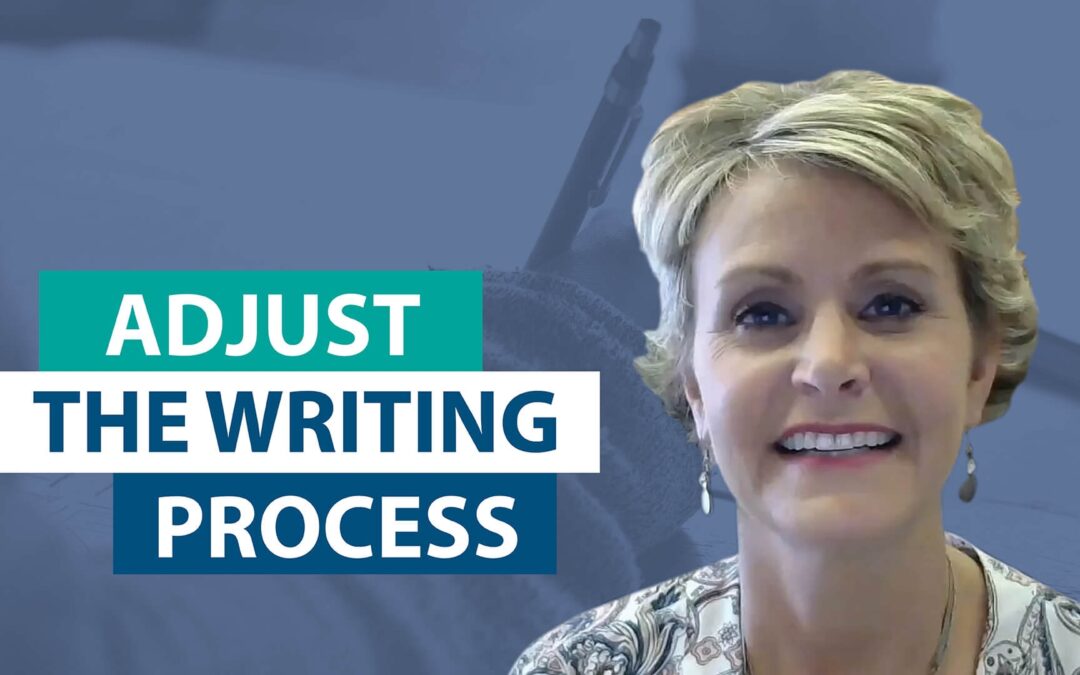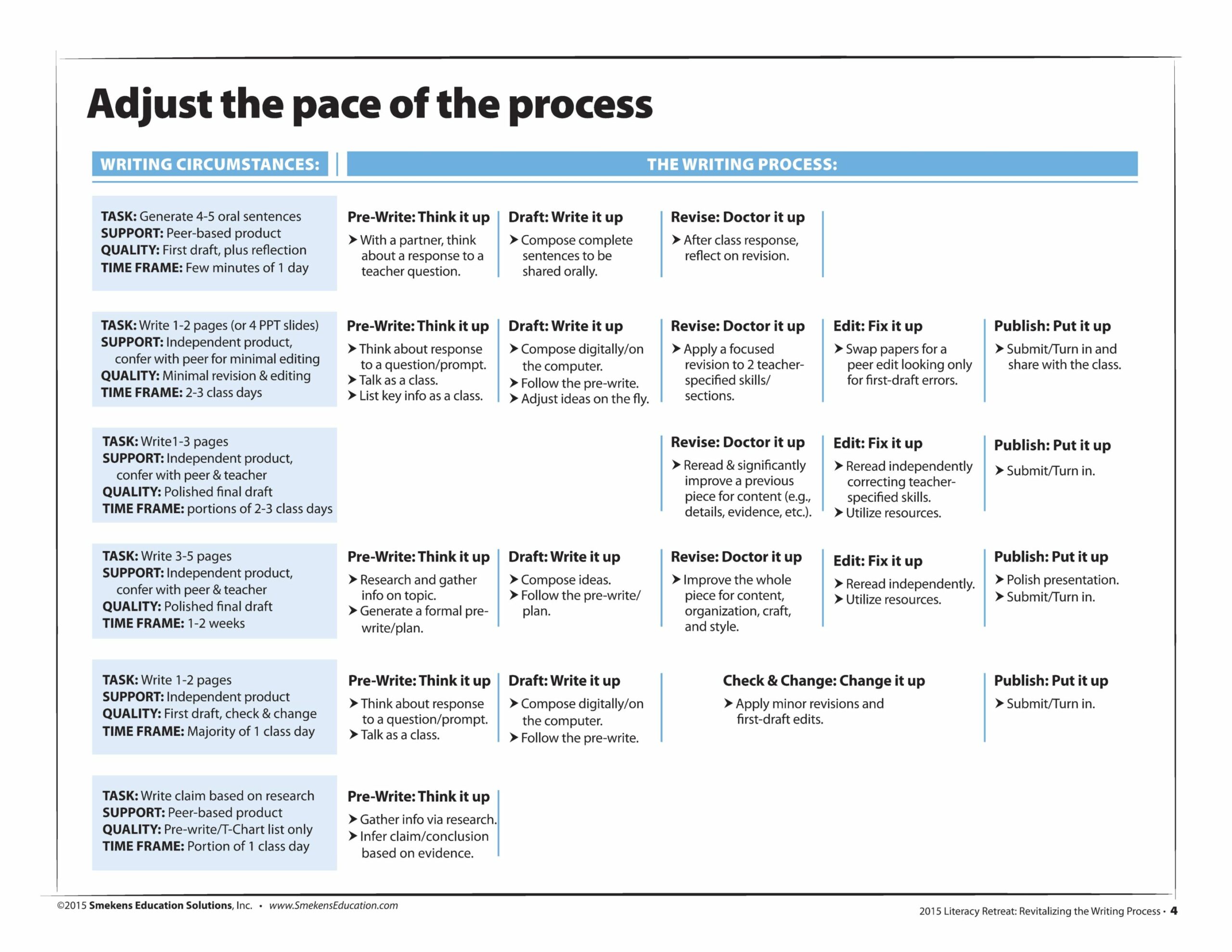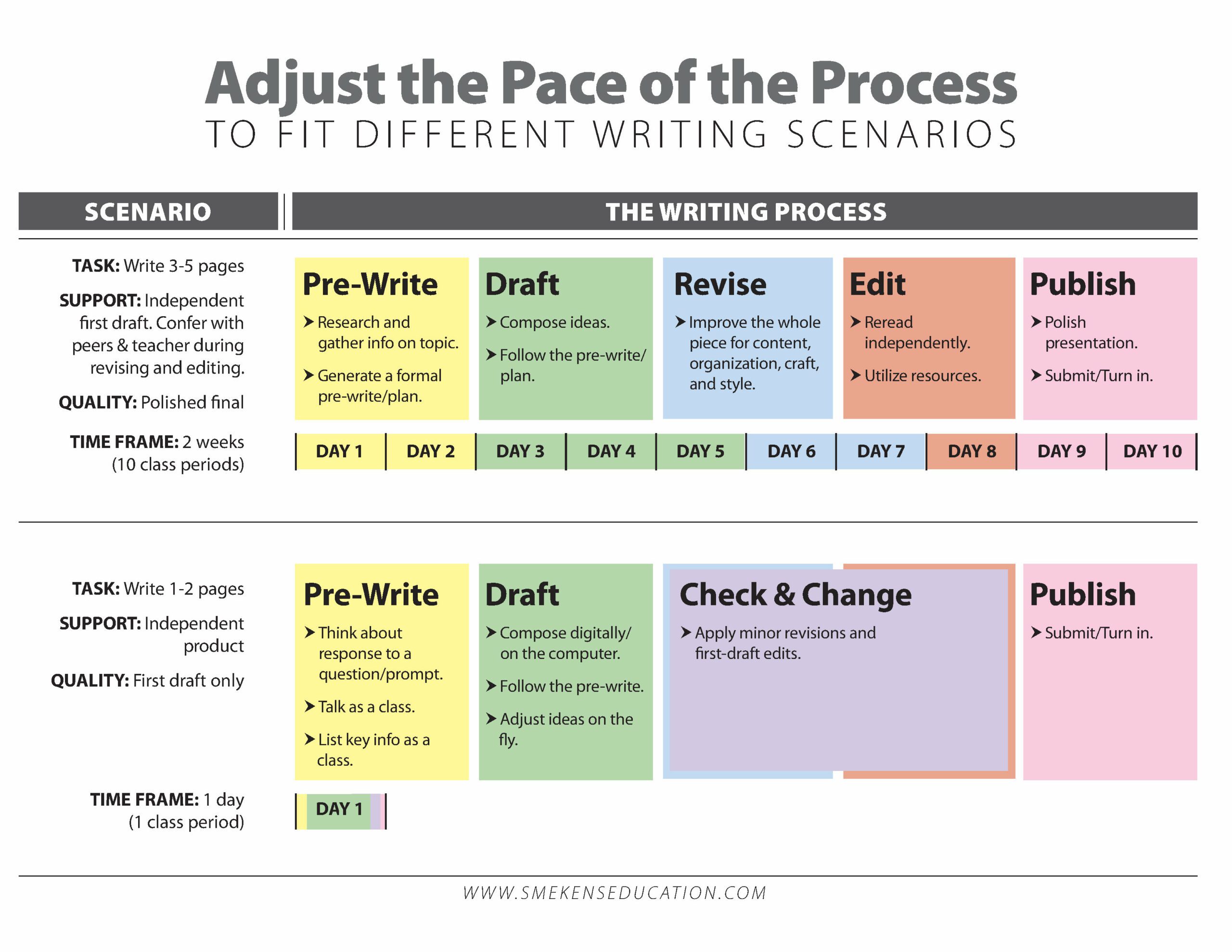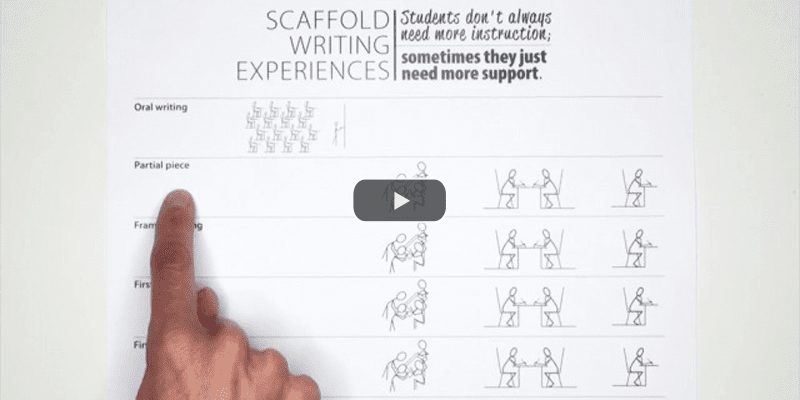Learning Center
Vary the pace of the writing process
october 27, 2023
The standards require that students have a wide range of writing experiences. This includes writing about various topics, for different purposes, to diverse audiences, and in numerous genres. However, this standard also includes teaching students how to execute the writing process within various time frames.
CCR.W10—Write routinely over extended time frames and shorter time frames for a range of discipline-specific tasks, purposes, and audiences.
The traditional writing process includes five steps: pre-write, draft, revise, edit, and publish. And while this typically consumes multiple days and weeks in the classroom, this isn’t always an option.
Within the real world, individuals have to start and finish a product within the same work day. Likewise, on a standardized test, a student has to start and finish a product in one sitting, as well. When students have the luxury of time—they should utilize it. But, when the constraints of the task require the piece to be produced more quickly, identify when and how to make adjustments. Specifically, teach them what steps to cut and which ones to prioritize.
Adjust the writing process
PRE-WRITING: When the product isn’t due for days, then the pre-writing stage can include thorough research on the topic and the completion of a graphic organizer. However, a standardized test presents limitations. Students have to be able to organize their ideas within minutes and begin drafting immediately.
DRAFTING: Whether writers have two weeks or 20 minutes, the goal is the same—to create a complete product. However, in on-demand writing scenarios, they have to keep an eye on the clock in order to create the strongest product as efficiently as possible.
CHECK, CHANGE, & PUBLISH: When time allows, writers revise and edit in two separate steps. However, most state assessments require students to produce an all-by-yourself first-and-only draft. They do not have access to peers for feedback. They do not have time for major revisions. They do not have resources for major editing. But what they can do is execute a thorough Check & Change before they submit or publish their written responses.
Knowing and executing the steps of the traditional writing process is important. However, mastery of this standard is exhibited when students are able to adjust their writer habits to fit the unique parameters of different writing scenarios. This includes working faster or slower—depending on the time frame. Completing the traditional writing process—or an abbreviated one. Composing on paper—or on a screen. This is the level of writer flexibility that the standards require.







